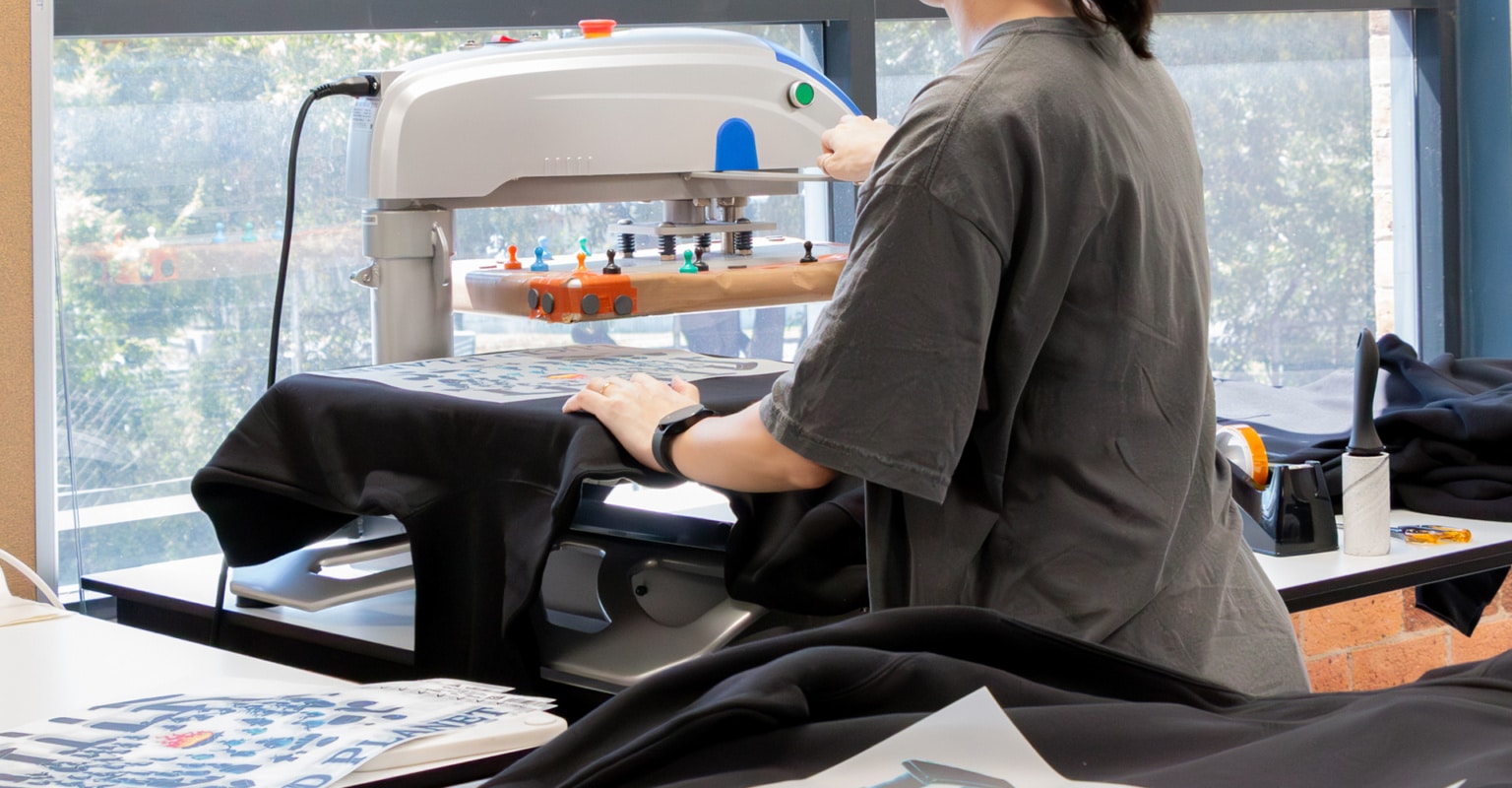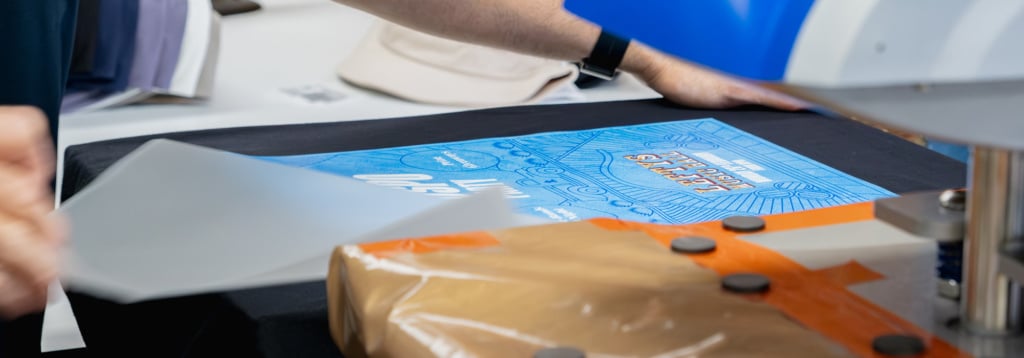
Everything You Need to Know About Direct to Film Transfers
DTF or direct to film is a print method that seamlessly transfers full colour designs onto apparel and merch using heat. This type of printing is also one of the most versatile methods within the print industry as it’s not limited to just cotton or cotton blend fabrics. With DTF we can work with a wider range of fabric types and mixes including fleece, polyester and of course, cotton.
How does DTF printing work?

Our Direct to Film transfers are printed on a layer of specialty film with eco water-based ink. The coloured image is printed first which is followed immediately by a white underbase to help colours pop on top of the fabric. The next step is to cover the entire back of the print with an adhesive powder, and this is then cured using heat by an internal oven. The adhesive powder is what will react with heat adhering it to the item when pressed on the heat press machine. Once the design has been pressed, we allow it to cool for a moment before the film is then peeled back revealing the final print, we then press it for a second time to increase its durability.
Unique positions
Specialty placements and durability are also no issue, the prints are quite resistant to cracking or flaking and can withstand the test of heavy-duty day-to-day wear. Apart from printing on apparel like t-shirts, jumpers, tanks, and hoodies, DTF printing can also be applied to various bags, backpacks, tote bags and more. Bulky jackets and bags are perfectly suits to this print method as well.
Its unique flexibility means we can also DTF print custom designed neck labels which is perfect for rebranding garments to your own brand.
Colour reproduction
DTF uses CMYK for colour reproduction allowing it to handle complicated designs and replicate photographs beautifully with no limitation on most colours. However, like Direct to Garment or DTG printing, DTF cannot offer exact colour matches (e.g. Pantone colour matching) and can only achieve something that is similar so colours may appear differently in real life.
When artwork is converted from RGB to CMYK this colour conversion does change the colour gamut and it’s especially noticeable in artwork that has bright, neon and pastel colours (for example hot pinks, lime greens, bright yellows, and oranges etc.). Fabric colour and material may also affect how colour artwork appears when pressed as well.
Preparing artwork files for DTF printing (common mistakes to avoid)
With DTF there are more requirements when it comes to artwork that we should adhere to. All files must be high resolution images of at least 300 DPI to create clean, crisp prints. Vector files are preferred but we also accept high-resolution PNG files.
When it comes to fine details, we recommend making these at least 1mm wide to ensure a lasting print through wash and wear.
Semi-transparencies, glows, drop shadows and soft edges are not suitable for DTF printing as the white underbase that is printed will make these edges visible in the final print.
We recommend turning the gradients and semi-transparencies into a halftone effect instead. This will mimic the gradient or shadowed effect creating a seamless transition from print to fabric.
With DTF, it’s good to keep in mind that the final print result will produce a different hand feel compared to DTG or screen print. The image is adhered to the fabrics surface and sits on top unlike DTG where the ink is absorbed directly into the garment fibres. As for screen print, this method uses plastisol-based inks so there is a degree of flexibility present compared to DTF which does not with full sized prints.
Why choose DTF for your next print project?
DTF is a great choice for uniforms, sports teams, merchandise and more because of its ability to withstand repeated wash and wear, versatility on fabrics and vibrant colour reproduction.
When to choose DTF printing
It’s a great middle ground between DTG and screen print when you’re wanting a similar finish to screen print, have a smaller print run to start with and your artwork is detailed with lots of colours.
DTF is also unique in its ability to place artwork in special positions including on the sleeves, down pant legs, close to side seams, inside the neck as a label, along the collar, you name it! If the garment and heat press allow for it, we can place it where you envision it.
It’s versatility to adhere to different fabrics means your sports team vests, specialty bags, mixed fabric garments and so much more are no obstacle.
Caring for a DTF print correctly will ensure it will last:
| What to do | What not to do |
| Cold wash only | Ho harsh detergents or bleach |
| Wash before wear | Do not tumble dry |
| Wash inside out | Do not iron print area |
| Line dry inside out (indirect sunlight) | Do not dry in direct sunlight |
Looking for special finishes?
It’s not as widely known but you can achieve certain specialty finishes with the DTF print method. This is great when you’re looking for something a little bit different to make your designs POP like super reflective or super metallic finishes. Get in touch with our team to see what we could do for you!
Are there minimum order quantities?
Yes! With all print methods that we offer there are minimum order quantities that you need to reach. For garments it’s 20 units per design (but this can be a mix match of different styles if the artwork is the same across all 20 items) and 25 units for headwear.
In conclusion
The technology used for DTF printing has come a long way from the days of iron on transfers. This method of printing offers a cost-effective solution for small to medium print runs and doesn’t compromise, at all, on quality. If you are looking to complete your project with the DTF print method or unsure if this is the right method for you, don’t hesitate to get in touch with our team!
